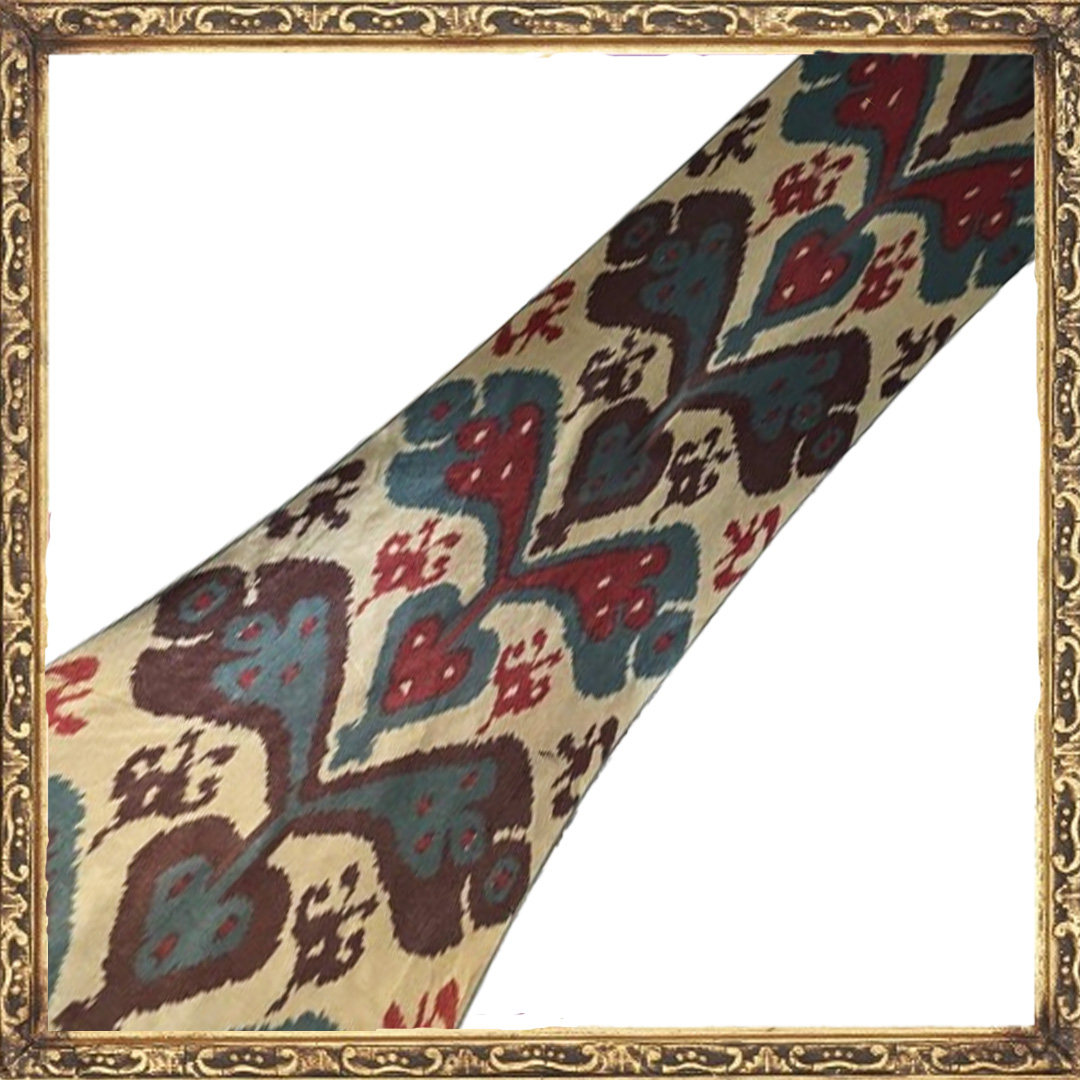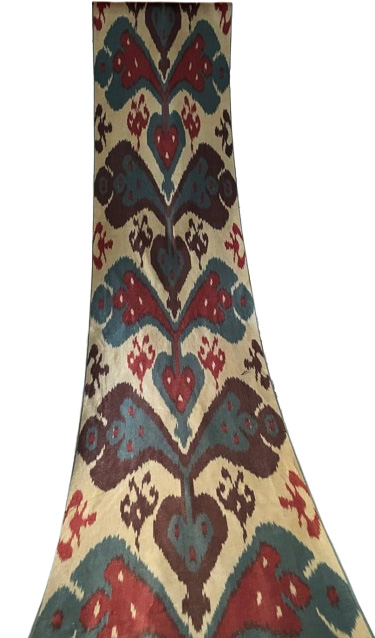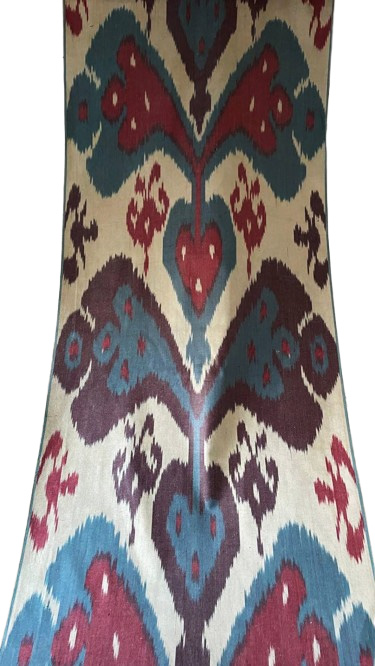Discover the Majesty of Balance: The Authentic Symmetrical Motif Ikat Textile
There is a profound and captivating beauty in perfect balance. This exquisite fabric from Uzbekistan is a masterclass in harmony and order, a true Symmetrical motif ikat textile that speaks to a deep appreciation for structure, heritage, and artistic precision. Its design is not random or abstract; it is a deliberate, architectural composition that draws the eye upward, creating a sense of majesty, stability, and timeless elegance. This is a textile for those who understand that true artistry lies in the flawless execution of a grand vision.
The power of this particular Symmetrical motif ikat textile lies in its perfect vertical balance. The entire pattern is a mirror image of itself along a central axis, creating a “tree of life” or totem-like effect. This central column is built from repeating elements, most notably stylized heart-like shapes, which are stacked and interconnected. This creates a powerful visual rhythm that is both grounding and uplifting. The color palette is equally sophisticated and controlled. A backdrop of warm, creamy beige allows the muted, earthy tones of the pattern to shine. A dusty, slate teal-blue, a deep brick or crimson red, and a grounding, dark plum-brown work in perfect harmony. These are not loud colors, but rich, confident hues that speak of history and refined taste.
A Deeper Look at the Motifs and Their Meaning
The heart of this design is its powerful structure. When you look at this Symmetrical motif ikat textile, you are seeing more than just shapes; you are seeing symbols that have been part of Central Asian art for centuries.
The Tree of Life: The overall vertical arrangement is reminiscent of the Tree of Life, a universal symbol of connection between the heavens, the earth, and the underworld. It represents growth, strength, and eternal life.
Heart Motifs: The repeating heart-like shapes are central to the design. In many cultures, they symbolize not just love, but life, courage, and the core of one’s being. Their repetition reinforces a message of vitality and strength.
Intricate Details: Flanking the central column are smaller, intricate motifs that add complexity and visual interest, ensuring the design is engaging from every distance.
The signature abr (cloud) effect, the soft bleeding at the edges of each color, is a testament to the incredible skill required to create a Symmetrical motif ikat textile. To achieve such perfect symmetry using a hand-dyeing technique where threads are tied and dyed before weaving is a mark of a true master artisan.
The Ideal Adras Blend
This fabric’s luxurious feel and visual depth come from the traditional Adras blend of silk and cotton. The silk warp provides the luminous surface that allows the rich, muted colors to glow with an inner light. The cotton weft gives the fabric a wonderful structure and durability, which is essential for maintaining the integrity of such a precise, architectural design. This blend ensures that this Symmetrical motif ikat textile is not only visually stunning but also a robust and versatile material.
Applications in Sophisticated Design
The formal, balanced, and elegant nature of this fabric makes it a superb choice for creating refined and impactful design statements.
For Elegant Interiors: The strong verticality of this Symmetrical motif ikat textile makes it ideal for applications that emphasize height and structure. It would be breathtaking as upholstery on a tall, stately armchair or a formal dining chair. As a wall hanging or tapestry, it becomes a powerful piece of architectural art. It is also perfect for long, elegant curtains or the front panel of a decorative screen.
For Structured Fashion: This is the perfect fabric for tailored, high-impact garments. Imagine a long, structured coat, a sophisticated vest, or the central panel of an elegant dress. The symmetrical design is incredibly flattering, creating an elongating effect that is both powerful and graceful.
By choosing this authentic Symmetrical motif ikat textile, you are embracing a legacy of balance, artistry, and cultural depth. You are supporting a craft that values precision and soul, and bringing a piece of timeless, majestic beauty into your life.











Reviews
There are no reviews yet.